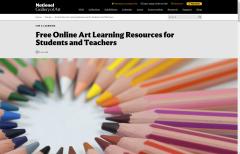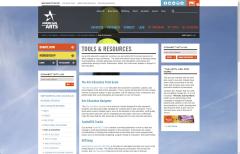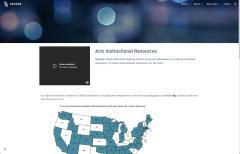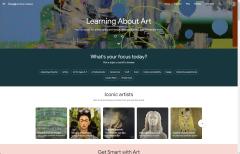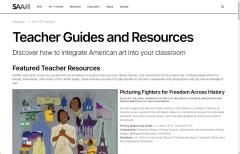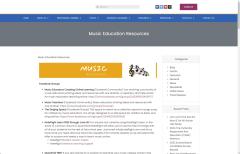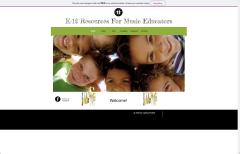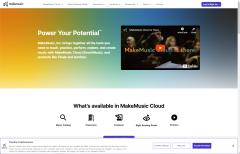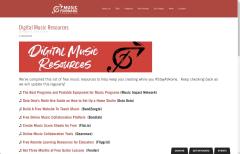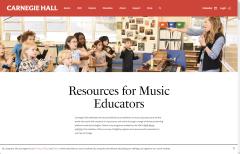- Details
- Category: Curriculum and Educational Practices
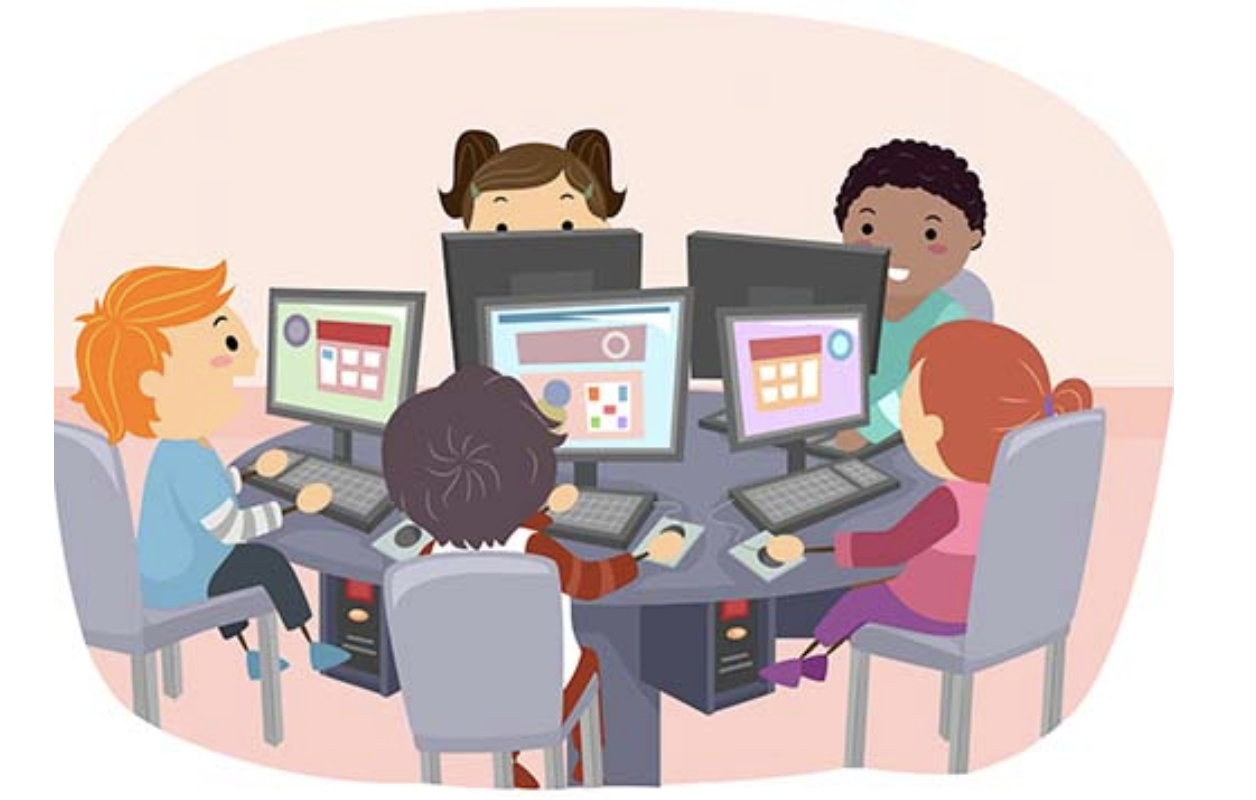
In this training, you’ll have the opportunity to explore various technology tools that you can utilize to enhance your classroom. You will learn how to move beyond just using technology towards genuinely integrating technology into your classroom. What does this mean? If you have an online presence, you'll learn how to move beyond having a website as a repository for your classroom. You'll learn how to make it a more interactive experience for your students. Also, you'll learn how to move beyond students simply creating a slideshow to present to the class.
Based on the available technology tools, this training caters to what you have, not what you wish you could have. This is a hands-on experience, so come prepared to roll up your sleeves and get ready to have some fun!
A similar course is also available online.
- Details
- Category: Curriculum and Educational Practices
If you are looking for resources to assist you in teaching the Arts and Music, please feel free to use the links below:
Arts
Music
- Details
- Category: Curriculum and Educational Practices
Listed below are comments from various evaluations and observations:
"Dr. Taylor demonstrated an understanding of diverse learners by meeting individually with any student who needed assistance. He also builds in formative assessment checks to conference with students throughout each 'quest'."
"Dr. Taylor plans according to pacing, content mastery, and application of knowledge. The sequencing of the lesson is largely student-driven, as is the pace (within reason) that students proceed through their quest."
"During student "quest" activities, Dr. Taylor plans for differentiation through self-paced activities and individual student conferences where students receive assistance with specific tasks and skills they are struggling with. In addition, challenge activities are built in for higher performing students that are tied to rewards in ClassCraft."
"The use of online learning and research, small group discussion, graphic organizers, and individually paced tasks demonstrate a variety of instructional strategy
and best practices."
"Dr. Taylor has educated himself to a high level in the use of ClassCraft, online learning, and integration of technology for student learning.
All of which were on display during this lesson."
"Dr. Taylor used the Plickers game as a pre-assessment so that students, parents, and he as the teacher could be aware of what the students know (or not know) when starting the unit. This information can be used later to guide instruction, monitor progress, and set goals."
"This entire lesson was a model in the use of higher level thinking skills for debate, reasoning, and use of evidence. Excellent!"
"The prodigious amount of student participation in the debate as well as their readily apparent motivation to participate demonstrates Dr. Taylor's understanding of the students' developmental levels."
"Based on the lesson content and sequence of instructional activities the teacher: 1. addressed relevant curriculum standards. 2. demonstrated an accurate, current, and deep knowledge of the subject matter. 3. exhibited pedagogical skills relevant to teaching Social Studies 4. based instruction on goals that reflect high expectations."
"The instructional sequence and evidence listed under standard 3 demonstrate that the teacher: 1. plans accordingly for pacing, content mastery, and application of knowledge; 2. aligns lesson objectives to curriculum and student learning needs.; 3. develops appropriate course, unit, and daily plans, and adapts when needed."
"Dr. Taylor did a great job infusing high level Social Studies and ELA standards into his lesson. He also continues to bring interesting technology into the classroom - this time in the form of classroom management. His use of technology is innovative, and is a great motivator for students."
"Awesome discussion about not knowing all of the answers but historians use all of the available information to make the best possible educated guesses. Discussion with examples (i.e. bridges). Excellent connections made with different sections of the USA and use of natural resources. Students connection of Socratic method to cause and effect graphic organizer and teacher's follow-up of the flow of history."
- Details
- Category: Curriculum and Educational Practices
ABSTRACT
Since the introduction of computers into schools there has been a great deal of discussion of what defines technology integration. The real issue, however, may not be what is and is not integration but rather how to understand the varying levels of integration in different settings. Educators often confuse lower-levels of integration with higher levels. As stated in How People Learn (Bransford, Brown, & Cocking, 2000), “The romanticized view of technology is that its mere presence in schools will enhance student learning and achievement” (p. 206). The Shamong Township is typical of most school districts across the country in that it reflects this same attitude.
This Executive Position Paper (EPP) is comprised of four chapters. Chapter One discusses the levels of technology integration in the Shamong Township School District. The DETAILS for the 21st Century Questionnaire is used to demonstrate the current levels of technology integration in the district. The District’s LoTi, PCU, and CIP levels results are discussed. Classroom observations and teacher interviews are given to demonstrate the misconceptions that often accompany levels of integration.
Chapter Two reviews literature that focuses on the varying levels of technology integration and the role professional development plays in either encouraging or impeding higher levels of integration. In reviewing the gaps in professional development, alternative methods are explored through the use of a Moodle. Discussion revolves around how a Moodle fits into a constructivist model of teaching.
Chapter Three presents case studies of three teachers working collaboratively with the technology coordinator to move to a higher LoTi level. Each case reviews the teachers’ LoTi, PCU, and CIP levels and how they pertain to levels of technology integration within the framework of a Moodle.
Chapter Four discusses recommendations for future improvements of professional development, a redefining of roles, and how utilizing a Moodle can assist in attaining higher levels of technology integration.
- Details
- Category: Curriculum and Educational Practices
Background
If I go back over 15 years ago, when I was first starting out in my doctoral studies, I was concerned about how technology fit into education. As a technology coordinator for a school district, I saw more technology being introduced into the district without a clear path of direction as to integrating the technology into the curriculum. Numerous computers were purchased to place in the computer labs and classrooms. However, the key part that was missing in this process was the lack of professional development needed to integrate this new technology. As I completed my doctoral studies and began to focus on my dissertation, I wanted to look at a way to prepare teachers better. In planning any professional development, I needed to remember Bloom's Taxonomy. Too often, technology was used in lower levels of Bloom's.
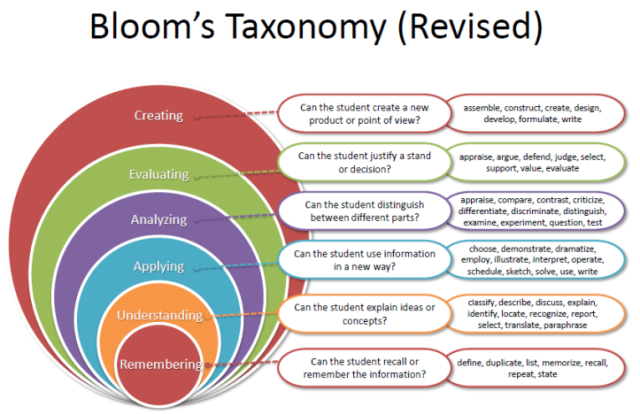 Bloom's Taxonomy
Bloom's Taxonomy
At that time, I needed a way to measure where teachers were with integrating technology into their classrooms. Fortunately, I heard about LoTi (Levels of Technology Innovation) from my advisor. LoTi survey was a self-assessment tool that allowed teachers to measure several factors: 1) Proficiency in Technology Use; 2) Student Influences on Instructional Practices; 3) Using Technology for Complex Thinking Skills; 4) Locating Resources and/or Assistance to Increase Existing Classroom Technology; and, 4) Overcoming Challenges to Beginning Classroom Technology Use. The other aspect of the survey was the results in three categories (noted in the picture below). The first score is the LoTi (Level of Technology Implementation), the PCU (Personal Computer Use), and CIP (Current Instructional Practice). As I began to put the pieces together on what the focus of my dissertation was going to be I realized if I was going to focus on technology integration, I needed a tool to measure it. However, integration was deeper than having teachers or students use computers. Technology integration had to be project-based and student-centered with an understanding of multiple intelligences. So, in the middle of my doctoral work and being the technology coordinator, I went off to train to become a LoTi-certified mentor.
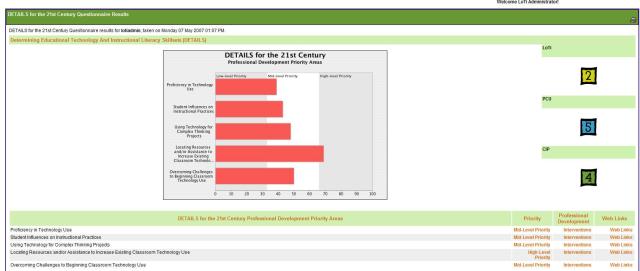 LoTi Results
LoTi Results
Upon completing my certification, I meet with administrators to explain to them how the LoTi survey could be a useful tool to help plan any professional development in the future. I asked them to imagine using the results to plan in-service days better. So, if the results showed a teacher that was more student-centered in their approach but lacked technology knowledge, a professional development plan could focus on the technology aspects of teaching. On the other hand, if a teacher were tech-savvy but took more of a teacher-centered approach, their professional development would be to work with them on developing a more student-centered approach. What of the teachers tended to give worksheets to the students? Professional development could focus on project-based learning. The goal would be to get teachers at a LoTi level (see below) of 3 or above.
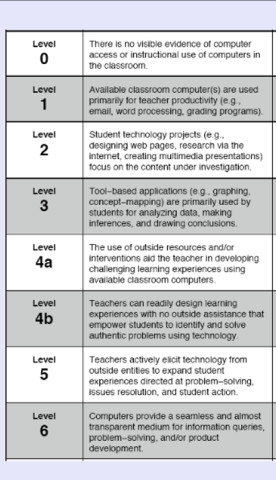 LoTi Levels
LoTi Levels
The experience up this time, when it came to professional development, was to take all of the teachers and put them in a computer lab, throw a bunch of software at them, and have them walk away at the end of the day knowing how to use it. For the more advanced users, they would get bored or impatient and start to tune out. You would see them checking their email or surfing the web. Those less experienced teachers would become overwhelmed and feel guilty about holding everyone back from moving forward. Needless to say, this often resulted in teachers scrambling around to each other asking, "How do you do ....?" or "Where do I find ...." Meanwhile, back at my meeting with administrators, I emphasized not to go through with the survey if we wouldn't use it to plan professional development better. Unfortunately, that advice was ignored. Teachers took the survey, the information was gathered, and then a report was given to the Board of Education on the results. After that, the district continued to provide professional development just as it had in the past.
Planning and Implementation
If your school district is looking for a better way to integrate technology into the classroom, knowing what to do and how to get started is imperative. If you are going to make a commitment, you must devise a plan. The level of commitment must go beyond what "looks good." Whether you choose to use the LoTi Survey or another tool, an assessment of where your teachers are regarding technology integration is necessary. Also, you must be committed to providing professional development to teachers. As noted above, this does not mean the one-day in-service session. A long-term plan must be implemented. A note of caution if you decide to use the LoTi Survey - encourage teachers to be honest in their self-assessment. Remind teachers this survey is about where they are now, not where they want to be. Be Honest!
Once the teachers have taken the survey, it's time to assess the results and start planning for the future. As you begin to plan your professional development, you will now have a tool to assist you. Need assistance with this process? That is where Technology in Education Online comes into the picture. My doctoral dissertation was based on technology integration, Using Moodle to Leverage Technology Integration.
What Technology in Education Online can do:
- Coordinate and Implement the LoTi Survey within your district.
- Assist the district in analyzing the data and planning professional development for teachers.
- Meeting with district teachers to go over survey results.
- Provide consultation services.
- Conduct on-site workshops based on the results of the LoTi survey.
- Provide in-class collaboration.
- Face-to-face meetings with teachers to help integrate technology into their classrooms.
If these ideas get you excited and your district wants to move forward, please contact Technology in Education Online. Want to get a sense of my experience, please take a look at the abstract of my dissertation - Abstract - EPP.
